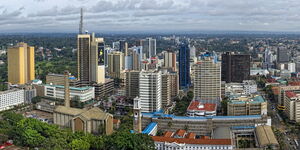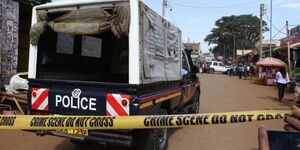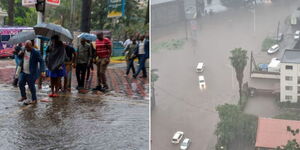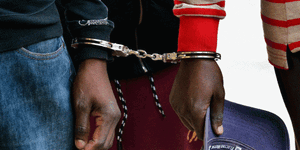Did you know that the simple act of using water and soap after getting bitten by a rabies-infected dog can reduce the likelihood of contracting the fatal virus?
Getting bitten by a dog is never a pleasant feeling. Typically, dogs can record a bite force ranging from 200-700 PSI (pounds per square inch), resulting in lacerations, wounds, infections or crush injuries. For context, humans record an average bite force of 120-160 PSI, much less than dogs.
The biggest risk with getting bitten by a dog is contracting rabies, a viral infection that affects the Central Nervous System (CNS) and travels towards the brain. Once it reaches the brain, it multiplies rapidly, causing inflammation. Rabies is typically spread when infected saliva from a dog comes into contact with broken skin, eyes, nose, or the mouth.
Once it hits, rabies is almost always fatal, resulting in death. However, while appearing on NTV on Thursday, October 2, veterinary surgeon and senior research fellow Dr Pauline Njoroge revealed that by using water and soap for 15 minutes, one could potentially save themselves and that of others, from contracting rabies after a dog bite.
According to Njoroge, the spread of rabies after a dog bite is not immediate, as compared to a snake bite, where the effects are seen almost instantly. She revealed that it would take a few hours for the virus to spread, giving victims the chance to apply the tried and tested first-aid technique before receiving medical treatment.
By washing the wound with water and soap, one is able to neutralise the effect of the bite and avert any potential disaster. Njoroge emphasised that this technique was not to be used in place of medical treatment but as a temporary relief before going to the doctor.
“When a dog bites you, the virus is in the saliva, and it sits there for a few hours. So when you immediately wash the wound, you neutralise the spread of the virus. You can wash the wound with your usual water and soap for 15 minutes,” Njoroge noted.
Njoroge noted that the technique would be particularly useful to people in informal or grassroots areas, where a health facility is not readily available. As for why it had to be 15 minutes onwards, she noted this was due to the typical deep nature of the wounds, resulting from a dog’s sharp teeth.
“We all know that dogs have sharp teeth, to go deeper when they bite. That’s why you need to wash the wound a lot, at least 15 minutes with soap and water,” she advised.
A person suffering from rabies usually experiences early symptoms such as fever, headache, weakness, tingling, or pain at the bite site. Other symptoms include anxiety, confusion, agitation, difficulty swallowing, hydrophobia, hallucinations, paralysis, and eventually coma and death.
Despite the presence of vaccines, rabies leads to the deaths of approximately 2,000 Kenyans annually, with 59,000 dying globally.
Normally, the vaccines are given in two stages: pre-exposure Prophylaxis (PrEP) and post-exposure Prophylaxis (PEP). In pre-exposure, vaccines administered include the Human Diploid Cell Vaccine (HDCV) and Purified Chick Embryo Cell Vaccine (PCECV). It is given in three doses and given to people at high risk, such as veterinarians, animal handlers, or travellers in high-risk areas.
In post-exposure, one receives rabies immunoglobulin (RIG), which is injected around the wound for severe exposures. One also gets a rabies vaccine, which is a series of 4–5 doses over 2–4 weeks, depending on the protocol used.
Vaccines are also administered to dogs, with experts noting animal vaccination as the single most cost-effective way to prevent human rabies deaths.












